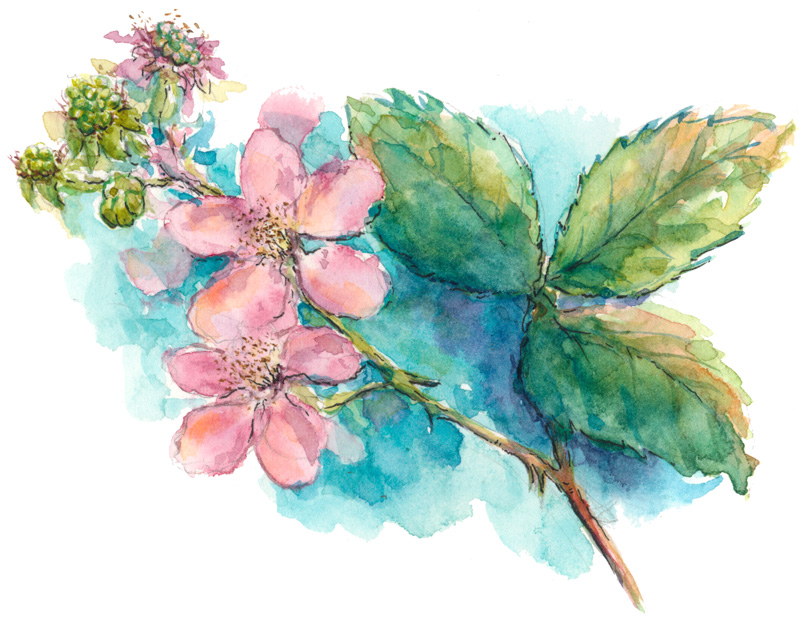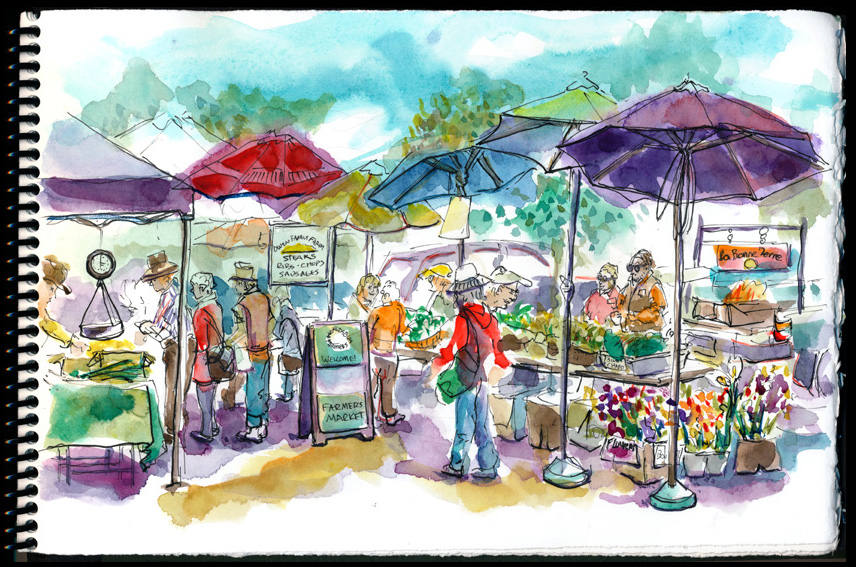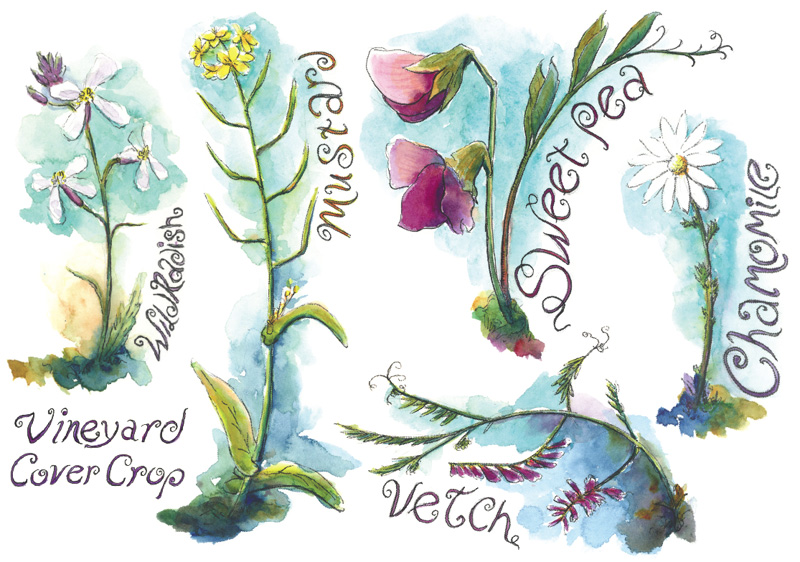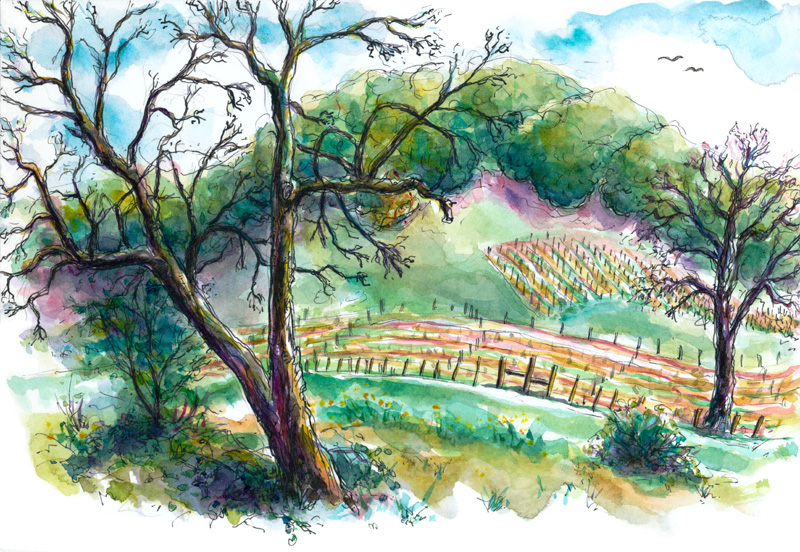Early this morning while walking my dogs, a wild blackberry bush in full bloom caught my eye. Stepping into the weeds off the dirt road for a closer look, I admired the delicate pink blossoms growing among its thorny mesh of canes. I remember from previous years that these blooms don’t last long. In a few days, the pink petals will curl back allowing fruit to swell from its many ovaries. Then in a few weeks, the young fruit will change from light green to red, and then finally to a rich black pigment, ripe for picking.
With my dogs panting from the heat, I decided to pause and sit under a nearby tree, pulling out my sketchbook to pass the time. A gentle breeze swayed the branches above, dancing sunlight across the page where I painted the blackberry bush.
The blackberry is one of my favorite fruits. Luckily, wild berries are in abundance along creek beds in Sonoma County. Later this summer I’ll pick these aromatic beauties to top off yogurt, breakfast cereal, ice cream, and to make filling for pies. If I can find enough berries, I’ll even make blackberry jam. I remember when I was young and ambitiously picked berries along a creek behind our family’s house. By days end, grocery bags of fruit lined the walls of our kitchen, bewildering my mother. “What to do with it all?†she asked.
Then it was suggested we make jelly and the project began. We heated, mashed and stirred the berries into syrup, and copious amounts of sugar and pectin thickened it hard, even to the point of being difficult to spread on toast. But despite its thickness, the finished jelly tasted like summer and we ate it profusely. We loaded it on breakfast biscuits and accompanied it with peanut butter on bread. The one batch happily lasted for years. We loved it not only because it tasted good but because of the care we put into making it.
I knew it was time to finish sketching when I felt the tongues of two restless dogs licking my feet. I obliged and packed up my gear, heading home for a cool drink and to search for jelly jars, hopefully still packed away in the garage and waiting for use.







